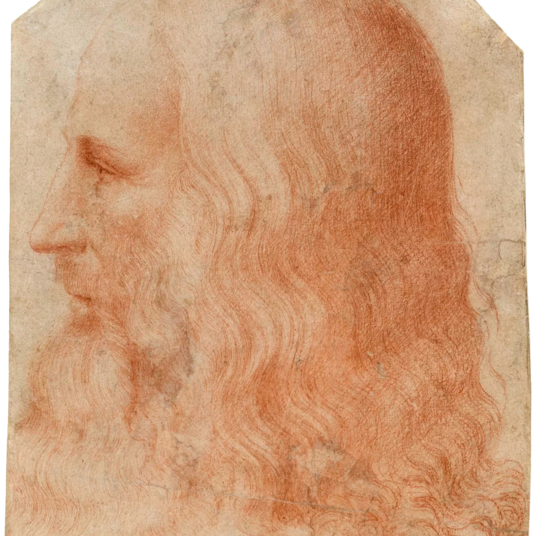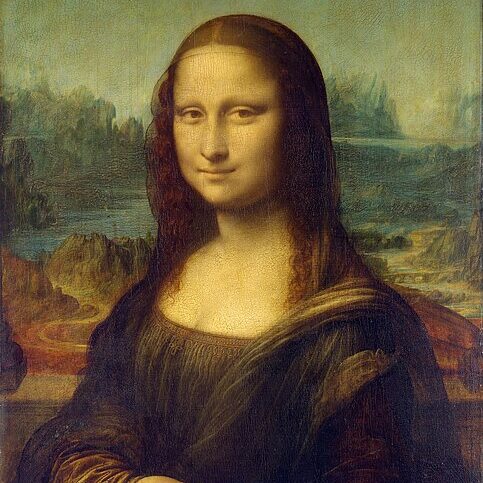Table of Contents
At first glance, the continuous learning aspect of the leadership journey seems like an effortless pursuit. With so many resources available to leaders at all stages of their journey, choosing what to consume often presents the most significant challenge.

But looks can be deceiving. And many leaders stumble on this seemingly benign part of the path.
For those of you grappling with continuous learning, I present an unexpected source of inspiration: a self-taught painter, sculptor, and polymath who lived from 1452 to 1519. You might know him as Leonardo da Vinci. His life, often seen through the lens of art history, holds a wealth of insights for leaders.
I recently finished Walter Isaacson’s superb biography of Leonardo. This highly informative and well-researched book is a treasure trove of insights. It covers the bulk of Leonardo’s life, from his birth as the illegitimate son of an Italian notary to his death some 67 years later in the care of his admiring patron, the French King Francis I.
What I hadn’t expected to glean from the book was a fascinating set of lessons about our own continuous learning journeys and how they directly address modern leadership challenges. And I’d love to share those with you.
Leadership lessons can come from surprising sources

First, I found these lessons in what would seem like an unlikely place. I found a compelling series of lessons about leadership in a biography of a famous Renaissance painter.
Thus, our first lesson is always to keep an open mind as we continue learning. While reading leadership classics like Dale Carnegie’s How to Win Friends and Influence People will always be a part of this ongoing learning, continue reading books on myriad topics.
You never know when you’ll encounter a piece of wisdom that could transform your leadership journey. As I’m trying to illustrate, many insights can come from unexpected sources, which leads us to our first lesson from Leonardo.
Be exceptionally curious
Leonardo is often described as a polymath. A polymath is a person whose knowledge spans a wide range of topics and who can draw on this breadth of information to solve specific problems. The American founding father Benjamin Franklin is also considered a polymath.
Leonardo had an insatiable appetite for information, constantly seeking out new knowledge. Yet, he did so with a limited formal education. He never learned Latin and was thus barred from reading many academic materials until they were translated into Italian later in his life.
His early studies often involved real-world observation and experimentation. He kept an extensive collection of notes and journals where he sketched his observations, hypothesized how the world works and kept eclectic to-do lists. Walter mentions one distinct item, “describe the tongue of the woodpecker,” as standing out for him. This peculiar line demonstrates Leonardo’s insatiable curiosity.
Much of Leonardo’s study of light, optics, and human anatomy makes sense because they influenced his paintings. We remember Leonardo for his works, which show the subtle play of light and shadows, depth and perspective, and even how the eye perceives images. In his time, Leonardo was unmatched in these techniques, and the lasting impact of his art is a testament to that.
But much of his interests and studies go well beyond that. Leonardo dissected over thirty human cadavers and made detailed notes and drawings in his journals that rival modern anatomy textbooks.
He dissected a freshly butchered pig to study its still beating heart and make inferences about the human heart. He studied hydrodynamics and conducted a considerable number of experiments. He married the two information streams to theorize how human heart valves close after each beat. His hypothesis would be definitively confirmed with modern medical imaging hundreds of years later.
He also spent much time people-watching and paying careful attention to how faces and gestures demonstrated emotion, which led to emotive storytelling in works like The Last Supper.
In addition to all this, he also studied architecture, mathematics, geometry, engineering, physics, geology, biology, and botany. I hope you’re beginning to understand just how insatiable his curiosity was.
Regarding leadership, I’m not expecting you to chase after farm animals with a scalpel. Modern animal cruelty laws wouldn’t allow it. Still, you should approach your continuous learning with a childlike wonder. Go down rabbit holes, explore new avenues of interest, and never stop learning.
Embrace the joy of learning
Leonardo liked learning for learning’s sake. Yes, some of his studies were related to his art, but he studied so much more simply because he enjoyed it.
Later in life, Leonardo rejected numerous lucrative commissions because he didn’t feel like painting. His study of the natural world gripped him, so he didn’t need to paint, except when he found something worth painting (like a particular silk merchant’s wife, Madonna Lisa Gherardini).

In your own journey, you should study leadership itself. But feel free to study more than just leadership. Find other topics that interest you, and pursue them with a Leonardo-like hunger.
If you tire yourself of one subject, even leadership, move on and find new interests. The more you do this, the more you’ll discover that lessons directly benefiting your leadership journey will come from diverse places.
As I mentioned, I never expected to learn what I did by reading this biography. Likewise, I’ve learned valuable lessons about humility from a book about teaching personal finance to your kids. Be open-minded, explore what interests you, and be bold and explore new areas as long as you always continue learning.
Learn, not just for yourself, but for others
An ongoing theme in Walter’s biography is that Leonardo was easily distracted. He was also a perfectionist.
As a result, he often left work unfinished and didn’t share much of the knowledge he acquired. This should serve as a cautionary tale for your journey.
Leonardo’s journals contain a staggering wealth of information on an enormous number of subjects. His studies, experiments, and observations made him discover many things about the natural world.
He taught his students some of what he learned and shared much of what he knew with King Francis I. But, he didn’t see the need to share his work with a broader audience.
His discoveries, theories, and inventions had to be rediscovered hundreds of years later. Leonardo had come up with rudimentary versions of two of Newton’s laws of motion, but they went unpublished; thus, it fell to Sir Isaac Newton to ‘discover’ them almost two hundred years later. This underscores the importance of learning for oneself and sharing one’s knowledge with others.
Leonardo’s journals are full of stuff just like this. Amazing discoveries that, in not being shared with the broader public, needed to be rediscovered hundreds of years later. Imagine for a second how much more progress could have been made if his works had been published at the time of his death. How many more advancements could humanity have developed with a 200-year headstart on numerous scientific discoveries?
Today, Leonardo’s journals have been meticulously categorized and evaluated, but it could have been done so much sooner. It’s too late to share this wisdom with Leonardo, but we can still learn from him.
Two significant components of leadership are continuous learning and service to others. Why not kill two birds with one stone?
As you learn and grow as a leader, take advantage of the opportunity to share your knowledge with others. You have a tremendous opportunity to empower many more people than just yourself. Don’t leave it to those around you to “rediscover” what you already know.
“Pass on what you have learned.”
Yoda
As leaders, we must be open-minded and curious, enjoy learning, and share what we know. Whether you are just beginning your continuous learning or you are a well-seasoned polymath like Leonardo. Remember these lessons and the value we can derive from Leonardo’s life story.

